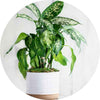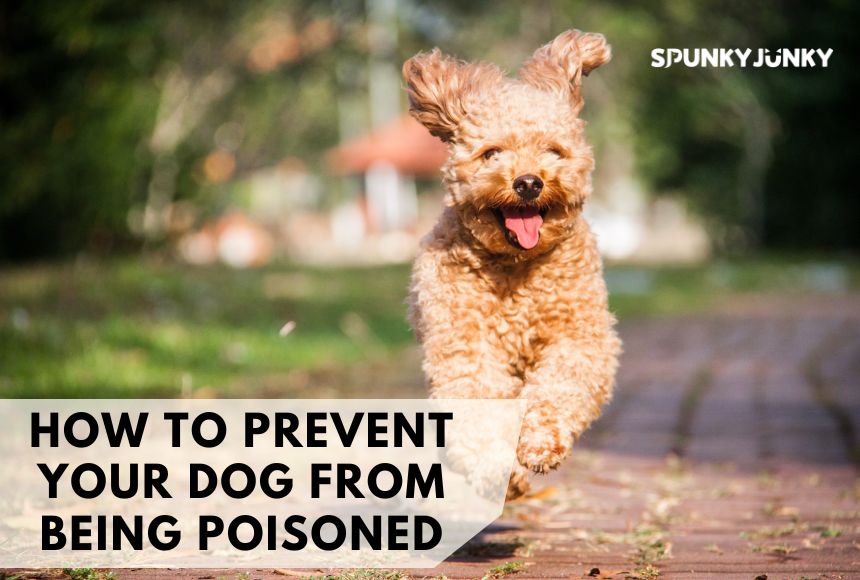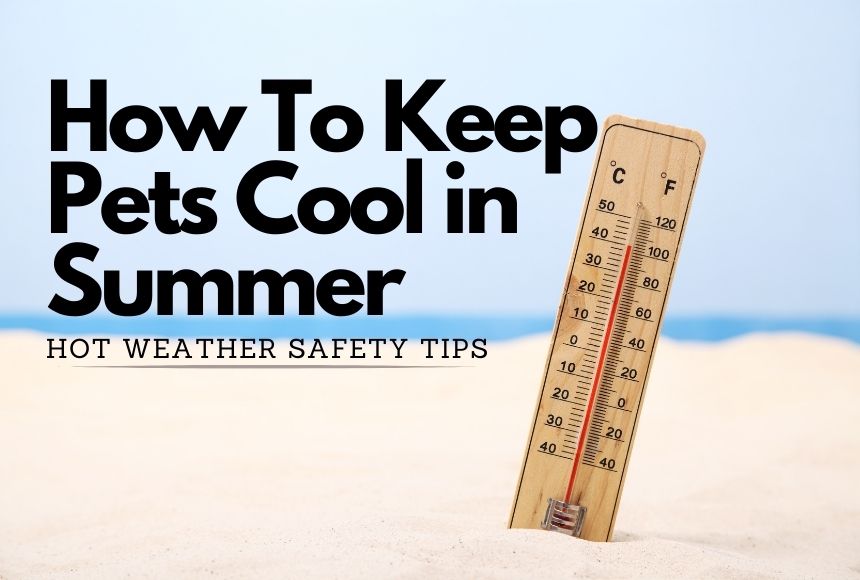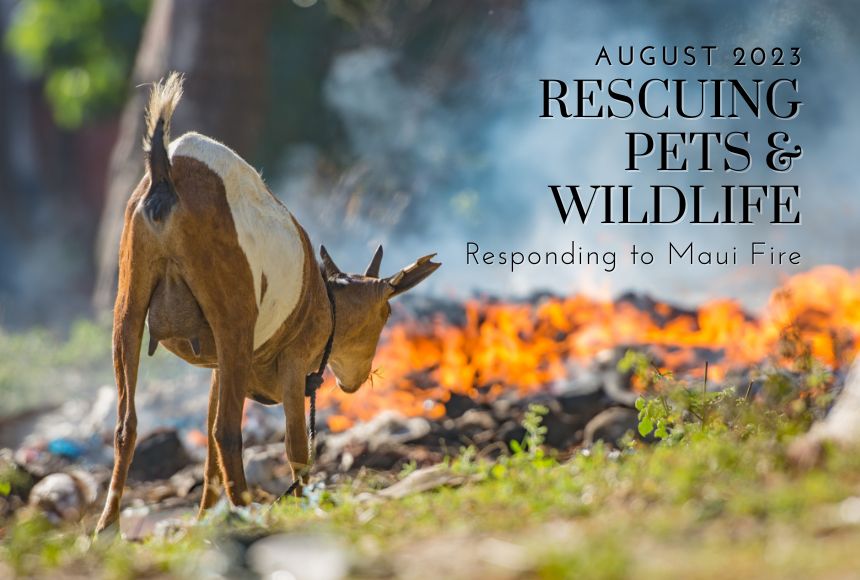Do you guys every once in a while to see the heartbreaking post of someone's dog passing away from accidentally ingesting something poisonous, when browsing FB, Instagram or Twitter?
According to a report on the steamboatRADIO, 4–8 dogs were poisoned at Rita Valentine Dog Park in May alone. Although, based on the investigation, they were not deliberately poisoned.
Poisoning dogs deliberately or not occurs frequently, so how to prevent dogs from being poisoned should be essential knowledge for every dog owner.
In this article, we will talk about how to prevent your dog from being poisoned in both indoor and outdoor chapters. Come and read it.
How to Prevent Your Dog from Being Poisoned - Indoor Chapter
Although, the well-decorated house is our warm abode, it is always a new base for curious dogs to explore. Anything we humans take home is a daily surprise for them. Inevitably, some of these are good for humans but toxic to dogs.
Poisonous things for dogs - indoors
As a precursor to preventing your dog from being poisoned, we need to eliminate indoor sources of poison that your dog has access to. Learn the poison things is the first step:
Poisonous plants for dogs
We all love plants, especially vibrant greenery and brightly colored flowers can bring us a good mood. But keep in mind that these listed plants are toxic to dogs.

● Sago Palm (Cycas revoluta): All parts of this plant are very poisonous, and if a dog eats it, it can kill its liver.

● Dieffenbachia: Also called dumb cane, has crystals made of calcium oxalate that can make a dog's mouth and throat sore.

● Philodendron: Like dieffenbachia, philodendrons have calcium oxalate crystals that can irritate the mouth, make you throw up, and make it hard to swallow.

● Pothos (Epipremnum aureum): Pothos plants have calcium oxalate crystals that can irritate your mouth if you chew on them or eat them.

● Caladium: The calcium oxalate crystals in caladium leaves can cause mouth sores, excessive drooling, vomiting, and trouble eating.

● Aloe Vera: Aloe vera has chemicals in it that are harmful to dogs and can make them throw up, have diarrhea, and feel tired.

● Peace Lily (Spathiphyllum): Peace flowers have calcium oxalate crystals and other poisons that can make your mouth hurt, make you drool a lot, make you throw up, and make it hard for you to swallow.

● ZZ Plant (Zamioculcas zamiifolia): The ZZ plant has chemicals in it that can make you sick if you eat them. If you do, you might throw up, have diarrhea, or feel pain in your stomach.

● Snake Plant (Sansevieria): If a dog eats a snake plant, it can cause stomach problems like upset, vomiting, and diarrhea.

● Jade Plant (Crassula ovata): When dogs eat too many jade plants, it can make them sick and make them feel down.

● Easter Lily (Lilium longiflorum): Easter lilies are very dangerous for cats and can also hurt dogs, possibly causing them to lose their kidneys.

● Tulip and Narcissus Bulbs: The bulbs of these spring flowers have poisons in them that can make dogs throw up, have diarrhea, and have even worse symptoms.

● Daffodil: Daffodils have poisonous alkaloids that can make dogs throw up, have diarrhea, and have other stomach problems if they eat them.

● Hyacinth: The blooms of hyacinth plants have chemicals in them that can make dogs throw up, have diarrhea, and have stomach pain.

● Oleander: This flowering plant is very poisonous. If a dog eats it, it can cause heart rhythms, vomiting, diarrhea, and even death.
Poisonous foods for dogs
You probably won't believe that some of our gourmet foods are deadly for dogs. These include chocolate, grapes, raisins, onions, garlic, avocado, alcohol, caffeine, xylitol (found in sugar-free products), and foods high in salt or fat.
Poisonous medications for dogs
Another possible toxic item that should not be overlooked is medications. These include pain relievers (e.g., ibuprofen, acetaminophen), anti-inflammatory drugs, antidepressants, and prescription medications not prescribed for the dog.
Prevention tips for indoor safety
1. Do not have toxic plants indoors, especially those produce pollen. If you already have greenery that is toxic to dogs, reposition them and keep them out of your dog's reach.
2. Store hazardous foods and medications in secure cabinets or containers.
3. Be cautious when using chemicals and cleaners, and store them away from your dog's reach.
4. Share these information with family members and guests, ensuring everyone is on the same page.
How to Prevent Your Dog from Being Poisoned - Outdoor Chapter
The indoor chapter about how to avoid poisoning in dogs is finished, I believe you guys know what to do now. So let's talk about the outdoor chapter - those points you must carefully treat.
Poisonous things for dogs - outdoors
Unlike indoor dangers that can be avoided, dog poisonings outdoors are often sudden. In order to keep your dog's walks as safe as possible, a knowledge of these outdoor "poisons" is necessary:
● Trash: Dogs might be tempted to scavenge through outdoor trash cans, exposing them to harmful substances.
● Insecticides and Pesticides: Dogs might come into contact with insecticides, pesticides, or fertilizers used on lawns, gardens, or outdoor spaces. These chemicals can be toxic if ingested or come into contact with your dog's skin.
● Stagnant Water: Standing water, such as in puddles, ponds, or lakes, can contain harmful bacteria, algae, or parasites that can cause various health issues if dogs drink from them.
● Antifreeze: Antifreeze is often found in driveways and parking lots. It has a sweet taste that can attract dogs, but it is extremely toxic and can lead to kidney failure if ingested.
● Plants and Wild Berries: Many outdoor plants and wild berries can be toxic to dogs if ingested. Examples include foxglove, oleander, yew, mushrooms, and certain berries. It's important to research the local plants in your area and ensure your dog doesn't eat anything from the ground.
● Mushrooms: While many mushrooms are harmless, some wild mushrooms can be toxic to dogs and cause symptoms ranging from stomach upset to organ failure.
● Sharp Objects: Outdoors, dogs can encounter sharp objects like broken glass, nails, or thorns that can cause injuries or be ingested.
● Lawn and Garden Products: Fertilizers, herbicides, and other lawn and garden products can be harmful to dogs if ingested or if they walk on treated surfaces and then lick their paws.
● Stinging and Biting Insects: Insects like bees, wasps, ants, and ticks can sting or bite dogs, causing discomfort or allergic reactions.
● Wildlife: Wildlife encounters can be dangerous, especially if your dog gets too close to animals like snakes, spiders, or insects that might bite or sting.
Prevention tips for outdoor safety
1. Keep your dog on a leash during walks to prevent them from eating unknown substances. If necessary, arrange for a muzzle.
2. Supervise outdoor activities to prevent encounters with wildlife or ingestion of toxic materials.
3. Train your dog to "leave it" and "come" commands to ensure control during outdoor adventures.
4. Remove any poisonous plants from your yard and be cautious during hikes or outdoor outings.
5. Avoid using toxic chemicals in your yard or garden.
6. Be cautious around bodies of water and avoid letting your dog drink from unknown water sources.
7. Regularly inspect outdoor areas for potential hazards before allowing your dog to roam.
Please remember, you can create a safer outdoor environment for dogs by keeping vigilant. If you suspect your dog has ingested something harmful, contact your veterinarian or a poison control center immediately.
Conclusion
In conclusion, how to prevent dogs from being poisoned is a vital part of responsible pet ownership. If you implement the strategies mentioned in this article, you can create a safer environment for your dog to thrive.
Remember, a few simple steps can sometimes make a world of difference. Your efforts will contribute to a healthier and brighter future for both you and your furry friend.






